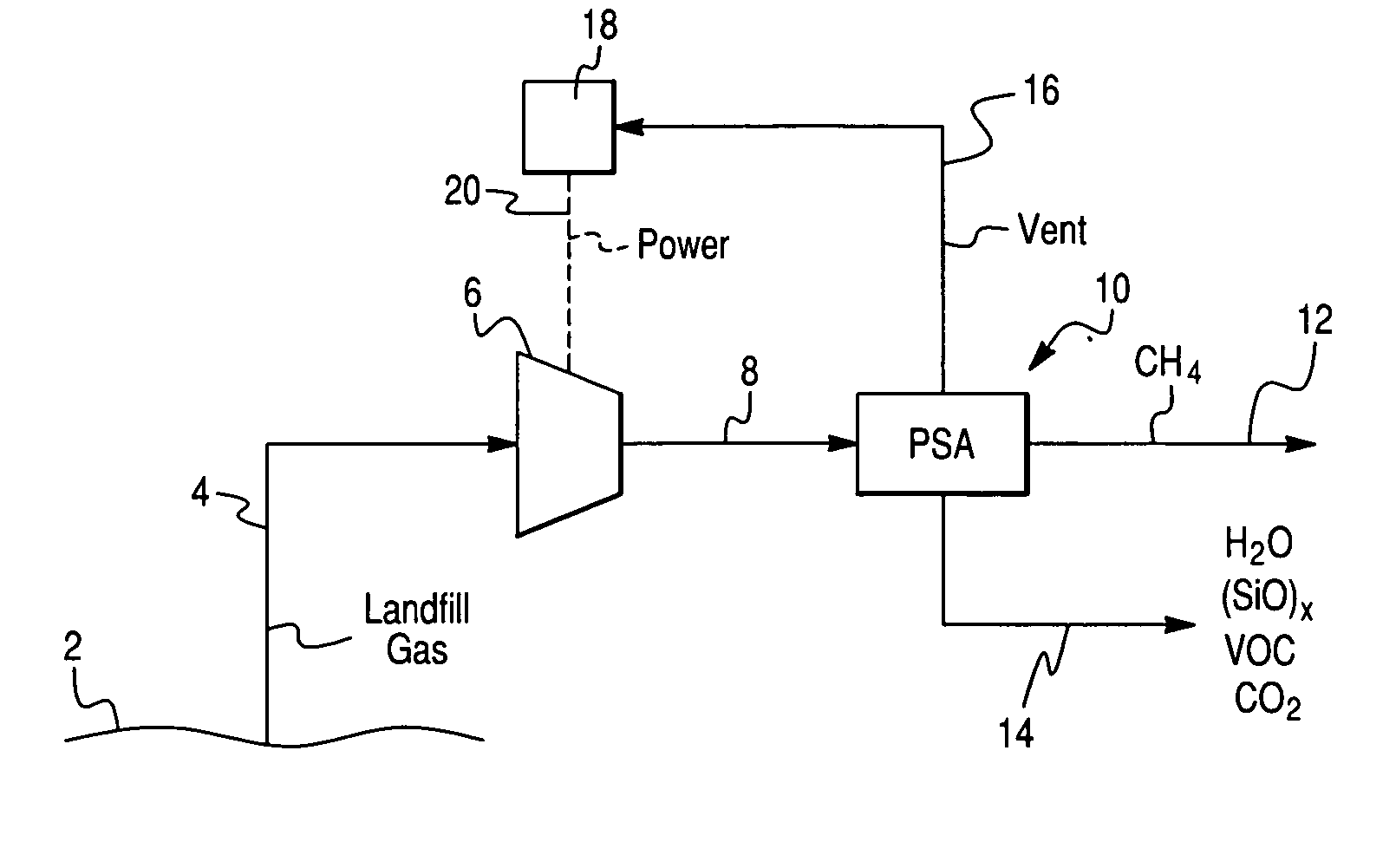Landfill gas upgrading process
a technology of upgrading process and landfill, which is applied in the direction of separation process, waste based fuel, and dispersed particle separation, etc., can solve the problems of high natural gas cost, more expensive exploration efforts, and shortages of supply, so as to achieve the effect of improving the quality of the gas
- Summary
- Abstract
- Description
- Claims
- Application Information
AI Technical Summary
Benefits of technology
Problems solved by technology
Method used
Image
Examples
Embodiment Construction
[0013] This invention provides a novel process for upgrading landfill gases. The landfill gas is upgraded by using a PSA system. The PSA system is used for siloxane removal, VOC removal, water removal as well as CO2 and N2 removal (if required) from the landfill gas.
[0014] In order for the PSA process to be effective, the landfill gas needs to be compressed from the initial pressure of the gas derived from the landfill to a higher pressure for use as a feed to an adsorber vessel of the PSA process. The feed pressure to the PSA will typically be about 60-150 psig. At the feed pressure, the impurities in the gas will be adsorbed or trapped by the PSA system. As disclosed previously with respect to prior PSA systems of the assignee, there is provided a vent step, in which the adsorber vessel is co-currently depressurized and an external methane-rich stream at intermediate pressure is produced from the process. However, unlike the previous formation of the external vent stream, the ven...
PUM
 Login to View More
Login to View More Abstract
Description
Claims
Application Information
 Login to View More
Login to View More - R&D
- Intellectual Property
- Life Sciences
- Materials
- Tech Scout
- Unparalleled Data Quality
- Higher Quality Content
- 60% Fewer Hallucinations
Browse by: Latest US Patents, China's latest patents, Technical Efficacy Thesaurus, Application Domain, Technology Topic, Popular Technical Reports.
© 2025 PatSnap. All rights reserved.Legal|Privacy policy|Modern Slavery Act Transparency Statement|Sitemap|About US| Contact US: help@patsnap.com


